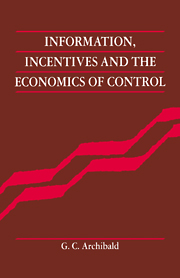Appendix: The taxation of economic rent
Published online by Cambridge University Press: 19 October 2009
Summary
The suggestions of Sun Yat Sen (1929) and Harberger (1965)
I shall briefly consider here a scheme originally devised as a truth-revelation mechanism for tax purposes. I shall put a very narrow, possibly unjustified, interpretation on this scheme as one intended to elicit truth about the valuation of rent-yielding assets only, as distinct from other forms of income and wealth. The desire for non-distorting taxes makes the taxation of rent appealing; and a truth-revelation mechanism that allowed us to identify and value sources of rent would be particularly appealing. It unfortunately turns out that the truth-revelation mechanism to be considered works only in (impossibly) ideal information conditions; and cannot, in any case, be relied on to distinguish between rent and other forms of income.
Consider a largely agrarian, and poor, country in which the main tax base is land. Suppose that the distribution of land ownership is strongly skewed, so that there exists a small plutocracy of extremely wealthy land-owners. Appraisal and tax collection are delegated to a few poorly-trained officials, who are easily corrupted or intimidated by the wealthy. Contemplating this situation in China, Sun Yat Sen (1929) proposed a scheme of self-assessment: each land-owner should declare, for tax purposes, his own valuation of his property, subject to the condition that the government, if it thought the land under-valued, could buy it at the owner's valuation.
- Type
- Chapter
- Information
- Information, Incentives and the Economics of Control , pp. 149 - 154Publisher: Cambridge University PressPrint publication year: 1992



